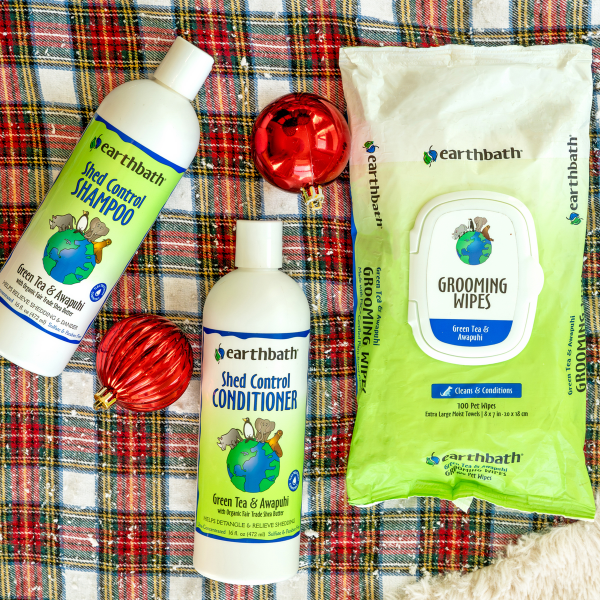As dogs age, they face unique health challenges that can affect their coat, skin, and overall grooming needs. While grooming is important throughout a dog’s life, senior dogs require extra attention and special care. This guide offers grooming tips tailored specifically for senior dogs, ensuring they stay comfortable, clean, and healthy. Whether you’re a pet parent or a professional groomer, our following ten tips, along with some product recommendations, will help you provide the best care for aging companions.
1. Understand Your Senior Dog's Grooming Needs
Senior dogs often have different grooming requirements compared to younger dogs. Their skin may become thinner and more sensitive, their joints may develop arthritis, and their coat can change in texture. These changes mean it’s essential to adapt your grooming approach to their specific needs.
2. Use Gentle, Dog-Safe Grooming Products
As dogs age, their skin becomes more delicate, so using gentle and high quality grooming products is crucial. Choose products specifically designed for those with sensitive skin. Look for shampoos and conditioners that are hypoallergenic, sulfate-free, and enriched with natural ingredients like oatmeal, aloe vera, and chamomile. These ingredients help to soothe the skin and provide moisture without causing irritation.
Tip: Use a moisturizing dog shampoo and conditioner with natural ingredients, like our Oatmeal & Aloe grooming set, which will help keep their skin hydrated and their coat moisturized.
3. Regular Brushing to Prevent Matting
Senior dogs tend to become less active, leading to changes in their coat, such as increased shedding or matting. Regular brushing helps remove loose hair, reduces shedding, and prevents mats from forming. You may want to start using a soft-bristle or rubber brush to avoid irritating sensitive skin. For long-haired breeds, a comb can help detangle knots gently.
Tip: Brush your senior dog’s coat at least twice a week to keep it healthy and tangle-free. Be sure to check behind the ears, under the belly, and around the legs, where mats tend to form.
4. Monitor Skin for Lumps, Bumps, and Irritations
As dogs age, they may develop lumps, bumps, or skin irritations. Regular grooming sessions provide you with an opportunity to check your dog’s skin for any unusual growths or sores. If you find anything suspicious, consult your veterinarian for further evaluation.
Tip: When grooming, gently run your hands over your dog’s entire body to feel for any changes in their skin. Pay close attention to common areas like the belly, neck, and under the tail.
5. Pay Attention to Nail Care
Senior dogs are often less active, which means their nails may not wear down as naturally as they used to. Long nails can cause discomfort, pain, and even mobility issues. Trim their nails regularly to keep them at a healthy length, using a dog nail clipper or grinder. Be cautious not to cut the quick, which is the sensitive part inside the nail.
Tip: If you’re unsure how to trim your dog’s nails, seek help from a professional groomer or veterinarian.
6. Dental Care Is Crucial
Older dogs are more prone to dental issues such as gum disease and tooth decay. Regularly brushing their teeth helps prevent these problems and keeps their breath fresh. Use a dog-specific toothbrush and toothpaste, as human toothpaste can be harmful to dogs. Other product recommendations include teeth wipes and chews specifically formulated to help complement your dog’s teeth brushing routine.
Product recommendation: Invest in a dental care kit that includes a toothbrush, finger brush, dog toothpaste and teeth wipes to maintain your dog’s oral hygiene.
7. Bathe Your Dog Less Frequently but More Carefully
Frequent bathing can dry out a senior dog's sensitive skin, so it's best to bathe them only when necessary. When bathing, use lukewarm water to avoid discomfort and always dry them thoroughly afterward to prevent chills. In between baths the use of waterless products is ideal for helping care for your senior dog’s grooming needs. From Grooming Wipes to Foaming Facial Wash earthbath offers a number of waterless grooming products that can help you bathe your elderly pet less.
Tip: When giving your senior pet a bath, place a non-slip mat in the bathtub to prevent your dog from slipping. This can be especially important for dogs with arthritis or mobility issues.
8. Trim Hair Around Sensitive Areas
Trimming hair around sensitive areas like the eyes, ears, and paws is essential for hygiene and comfort. Overgrown hair can irritate the eyes, trap moisture in the ears, and harbor dirt between the paw pads. Use blunt-tipped scissors for safety, and if you’re not comfortable doing this yourself, consider a professional groomer’s assistance.
Tip: Use grooming scissors with rounded tips to safely trim hair in sensitive areas and use wipes to keep eye, ears and paw free of extra debris.
9. Keep Their Ears Clean and Dry
Older dogs are more susceptible to ear infections, especially if they have floppy ears or a history of ear problems. Regularly check your dog's ears for signs of redness, odor, or excessive wax. Clean their ears using a vet-approved ear cleaner and a cotton ball or pad. Avoid using cotton swabs, as they can push debris further into the ear canal. Instead we recommend using our Ear Wipes that are gentle enough for daily use.
Tip: Dry your dog’s ears thoroughly after a bath or swim to prevent moisture buildup that can lead to infections.
10. Provide a Stress-Free Grooming Experience
Senior dogs may experience anxiety or stress during grooming sessions, especially if they have joint pain or other age-related conditions. Make grooming as comfortable as possible by creating a calm environment and using slow, gentle movements. Offer treats, praise, and breaks to keep the experience positive.
Tip: Consider using a grooming table or elevated surface to reduce the need for bending, which can ease strain on your senior dog’s joints.
Final Thoughts
Grooming your senior dog is not just about keeping them looking good—it’s an essential part of their overall health and well-being. With the right products, techniques, and a little extra care, you can help your aging companion stay comfortable, clean, and happy in their golden years. Remember, regular vet check-ups and professional grooming sessions can complement your at-home grooming efforts, ensuring your senior dog gets the best possible care.






